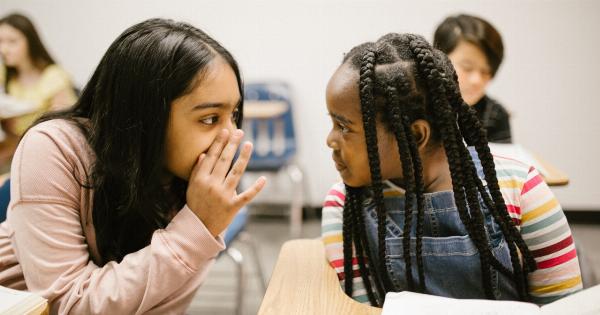Kindergarten bullying has become a rising concern in recent years, as evidenced by a comprehensive study conducted by KMOP. The study sheds light on the alarming increase in bullying incidents among young children attending kindergarten.
This article aims to delve into the findings of the KMOP study, exploring the impacts bullying has on children, potential causes, and highlighting important solutions to combat this concerning issue.
The Disturbing Rise in Kindergarten Bullying Incidents
The KMOP study, which surveyed over 1,000 kindergartens across the country, has revealed a significant surge in bullying incidents among children aged 3-6.
The findings indicate that nearly 20% of children have been engaged in bullying behaviors or have experienced some form of bullying at their respective kindergartens.
This startling rise in kindergarten bullying has raised concerns among parents, educators, and experts in child development.
It demands immediate attention and concerted efforts to identify the underlying causes and implement effective preventive measures.
Impact on Children
Bullying in kindergarten can have severe and long-lasting effects on children’s mental, emotional, and social well-being. These negative impacts can impede their overall development and hinder their ability to thrive academically and socially.
Children who become victims of bullying may experience a range of psychological issues, including low self-esteem, depression, anxiety, and even suicidal thoughts in extreme cases.
Additionally, they may display a diminished interest in attending kindergarten, which can further disrupt their educational journey.
Not only are the victims affected, but the bullying perpetrators also experience negative consequences. Engaging in bullying behavior at such a young age may indicate underlying issues that require intervention.
These children are at a higher risk of developing aggressive tendencies, learning difficulties, and poor social relationships in the future.
Potential Causes of Kindergarten Bullying
The KMOP study highlights several factors that contribute to the rise of bullying incidents in kindergartens. Understanding these underlying causes is crucial in effectively addressing and preventing such behaviors among young children.
1. Lack of Supervision
Inadequate supervision and monitoring in kindergartens may create an environment where bullying can occur more frequently. Insufficient staffing resources or overwhelmed teachers can struggle to effectively identify and intervene in bullying incidents.
2. Imitation of Aggressive Behavior
Children often imitate the behavior they observe from their families, peers, or even media. If a child witnesses aggression or bullying at home or in their surroundings, they may replicate this behavior in the kindergarten setting.
3. Social Dynamics and Peer Pressure
Peer pressure and the need to fit in with a particular social group can contribute to the development of bullying behaviors. Children who feel excluded or marginalized may resort to bullying as a means to gain control or assert their power.
4. Lack of Emotional Literacy
Many young children have limited emotional literacy and struggle to express and manage their emotions effectively. This inability to navigate and understand their own emotions can manifest in bullying behaviors towards others.
Addressing Kindergarten Bullying: Effective Solutions
Combatting kindergarten bullying requires a multi-faceted approach involving collaboration between parents, teachers, and relevant stakeholders.
The following strategies are instrumental in addressing the issue and promoting positive social interactions:.
1. Creating a Supportive and Inclusive Environment
Kindergartens must foster a nurturing environment that promotes kindness, empathy, and inclusivity.
Implementing programs that encourage positive behaviors, empathy development, and conflict resolution can help set the foundation for respectful interactions among children.
2. Strengthening Teacher-Student Relationships
Developing strong bonds between teachers and students can serve as a protective factor against bullying.
Teachers should establish open lines of communication, provide guidance, and offer emotional support to their students, creating a safe space for children to report and address bullying incidents.
3. Educational Initiatives on Bullying Prevention
Organizing workshops, seminars, and educational campaigns on bullying prevention can raise awareness among parents, teachers, and children.
These initiatives can provide valuable insights into the impacts of bullying and equip individuals with effective strategies to prevent and respond to bullying incidents.
4. Establishing Clear Policies and Reporting Systems
Kindergartens should have well-defined policies and procedures in place that explicitly address bullying.
The policies should clearly communicate the consequences of engaging in bullying behavior and outline reporting mechanisms for victims, witnesses, and concerned individuals.
The Path Forward: Protecting Kindergarten Children from Bullying
Kindergarten bullying is a concerning issue that demands immediate action. The KMOP study highlights the vital need for preventative measures, early interventions, and collaborative efforts to safeguard the well-being and development of young children.
By addressing the underlying causes, providing emotional support, and fostering a nurturing environment, we can create a safer and more inclusive space in which children can thrive and grow without the fear of bullying.
It is essential that parents, educators, policymakers, and the wider community come together to tackle this problem and ensure that every child’s right to a safe and happy kindergarten experience is upheld.






























